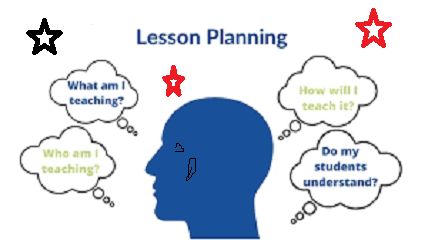An Effective Lesson Plan creating an effective lesson plan for secondary teaching …
Creating an effective lesson plan for secondary teaching involves careful planning and consideration of various elements to engage students and facilitate meaningful learning. Here’s a comprehensive guide.
Objective and Goals:
Clearly define the lesson objective and goals. What do you want students to learn and achieve by the end of the lesson? Ensure that these objectives align with curriculum standards.
Prior Knowledge Assessment:
Start by assessing students’ prior knowledge related to the topic. This can help you tailor your lesson to meet their specific needs and build connections between new and existing knowledge.
Introduction:
Begin with a captivating introduction to grab students’ attention. Use a thought-provoking question, a relevant real-world scenario, or a multimedia resource to set the stage for the lesson. Furthermore this will help to understand the process.
Direct Instruction:
Provide clear and concise explanations of key concepts. Break down complex ideas into manageable parts, and use varied instructional methods (lectures, demonstrations, multimedia presentations) to cater to different learning styles. in addition it will help to provide clear understanding.
Guided Practice:
Offer opportunities for students to apply what they’ve learned in a guided setting. This could involve interactive discussions, group activities, or hands-on exercises that reinforce the lesson’s key concepts.
Differentiated Instruction:
Recognize and accommodate diverse learning styles and abilities. Incorporate activities and assessments that cater to various intelligences, ensuring that all students have the chance to succeed.
Assessment and Feedback:
Integrate formative assessments throughout the lesson to gauge student understanding. Provide timely and constructive feedback to guide their progress. Consider a mix of informal techniques like questioning, quizzes, and discussions consequently this enhance the quality of lesson.
Closure:
Summarize the key points of the lesson and revisit the learning objectives. Engage students in a brief discussion or reflection on what they have learned.
Homework and Follow-up:
Assign relevant homework that reinforces the lesson’s content. Communicate any upcoming assignments or assessments related to the lesson.
Materials and Resources:
Prepare all necessary materials and resources in advance, ensuring that any technology, handouts, or other tools are ready for use.
Classroom Management Strategies:
Anticipate potential challenges and have strategies in place for effective classroom management. Clearly communicate expectations for behavior and participation.
Integration of Technology:
If applicable, incorporate technology into the lesson to enhance engagement and understanding. Use multimedia presentations, educational apps, or online resources to supplement your teaching.
Reflection:
Comparatively teachers After the lesson, take time to reflect on what worked well and what could be improved. Consider student engagement, understanding, and any adjustments needed for future lessons.
Adaptability:
Finally, be prepared to adapt your lesson in response to student needs. Flexibility is a key in addressing unexpected questions, challenges, or opportunities for deeper exploration.
Conculsion:
In conclusion, by incorporating these elements into your lesson planning process, you can create an effective and engaging learning experience for secondary students. Regular reflection and adjustments based on feedback will contribute to continuous improvement in your teaching practices.

Your article helped me a lot, is there any more related content? Thanks! https://accounts.binance.com/register?ref=P9L9FQKY
888 starz https://zigry.net/skachat-prilozhenie-888starz-na-android/
Thank you for your sharing. I am worried that I lack creative ideas. It is your article that makes me full of hope. Thank you. But, I have a question, can you help me? https://accounts.binance.com/bg/register?ref=UT2YTZSU
I do agree with all the ideas you have presented in your post. They are really convincing and will definitely work. Still, the posts are very short for starters. Could you please extend them a bit from next time? Thanks for the post.